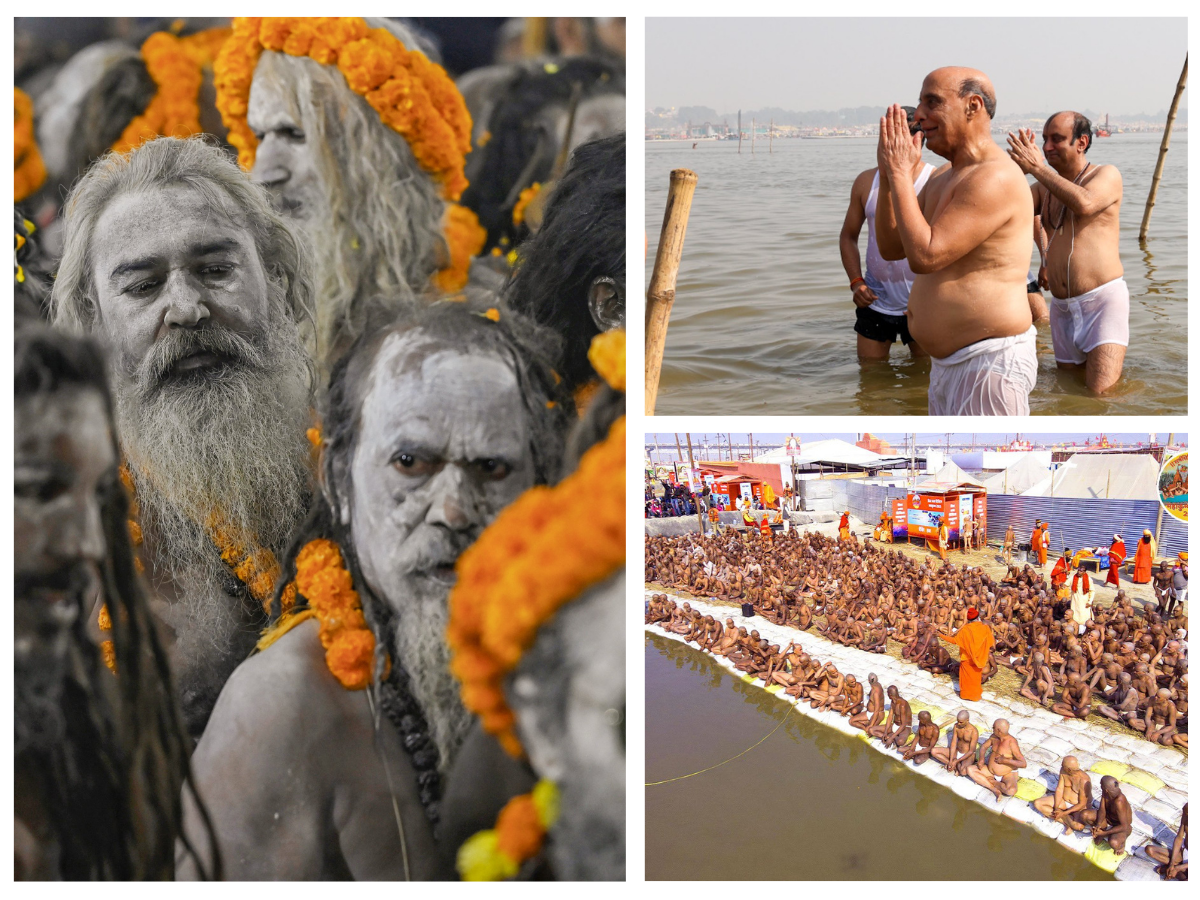) |
|
The 2025 Mahakumbh Mela in Prayagraj, India, has drawn massive crowds. By the sixth day, over 75 million devotees had participated in the sacred bathing ritual at the Sangam confluence of the Ganges, Yamuna, and Saraswati rivers. This incredible turnout highlights the enduring spiritual significance of the Kumbh Mela for Hindus worldwide. The sheer scale of the event presents logistical challenges, necessitating the innovative use of AI cameras for crowd counting and tracking, ensuring smooth operations and the safety of pilgrims.
The Kumbh Mela isn't just a religious event; it's a significant socio-political spectacle. High-profile figures from Indian politics have made appearances, underscoring the event's national importance. Defense Minister Rajnath Singh, along with BJP spokesperson and Rajya Sabha MP Sudhanshu Trivedi, participated in the holy bath, highlighting the government's support for the event. The presence of such high-ranking officials underlines the Kumbh Mela's significance within the Indian political landscape. Further adding to the political spotlight, Chief Minister Yogi Adityanath has planned a cabinet meeting on the sands of the Sangam on January 22nd, emphasizing the Kumbh Mela's influence even on governmental processes. The upcoming visit of Home Minister Amit Shah is also anticipated, further solidifying the event's profile on the national political stage. Prime Minister Modi's expected visit on February 8th or 9th adds yet another layer to this important intersection of faith and politics.
Beyond the political scene, the Mahakumbh Mela 2025 witnessed a profoundly spiritual event: the initiation of 5,000 Naga Sadhus. This significant ritual involved the symbolic offering of Pind Daan (oblations for departed ancestors) for themselves and their seven generations, a deeply moving and significant act within the Naga Sadhu tradition. The process of becoming a Naga Sadhu is a multi-stage process involving rigorous spiritual practices and devotion. The initiation process underscores the deep-rooted spiritual traditions and asceticism integral to the Kumbh Mela. The large-scale initiation of these 5,000 aspirants further emphasizes the enduring power of the Kumbh Mela as a catalyst for spiritual transformation, drawing individuals towards a life of renunciation and religious devotion. The event also showcased the scale and organization of the Juna Akhara, the largest of the thirteen Akharas, which houses a large number of Naga Sadhus and Mahamandaleshwars. The anticipation of 20,000 to 25,000 Naga Sadhus being initiated across seven different Akharas during this Kumbh Mela further illustrates the significance and scope of this spiritual gathering. The Naga Sadhus, revered as protectors of Sanātana Dharma (eternal righteousness), play a vital role in preserving ancient Hindu traditions and beliefs.
The 2025 Mahakumbh Mela in Prayagraj represents a convergence of faith, politics, and tradition. The extraordinary number of pilgrims, the participation of high-profile political figures, and the large-scale initiation of Naga Sadhus all contribute to the event's multifaceted nature. The Kumbh Mela's enduring significance lies in its ability to bring together millions of devotees in a shared expression of faith, while simultaneously serving as a stage for political engagement and the perpetuation of ancient spiritual practices. The careful planning and execution, highlighted by the use of technology and the smooth coordination of religious and political agendas, ensure the success of this momentous gathering. The event demonstrates the incredible organizational capabilities needed to manage such a massive influx of people while maintaining a sense of order, peace, and reverence for the sanctity of the occasion. The future observances of the Kumbh Mela will undoubtedly continue to draw massive crowds, reflecting its enduring importance in the cultural and spiritual fabric of India.
